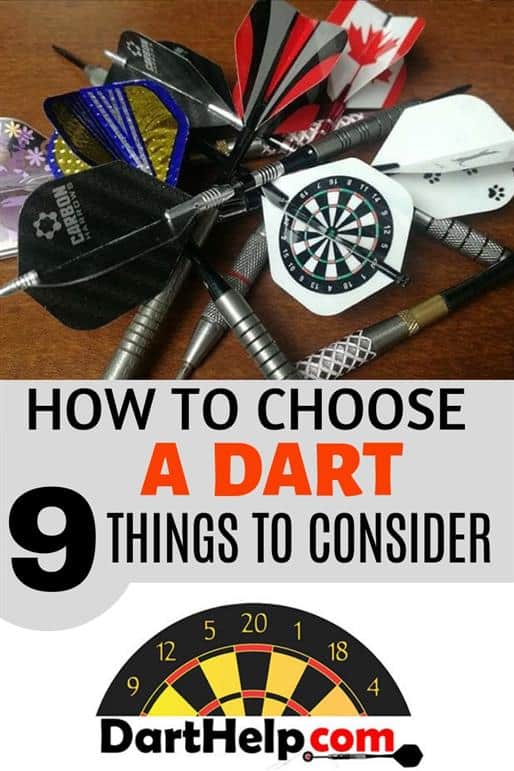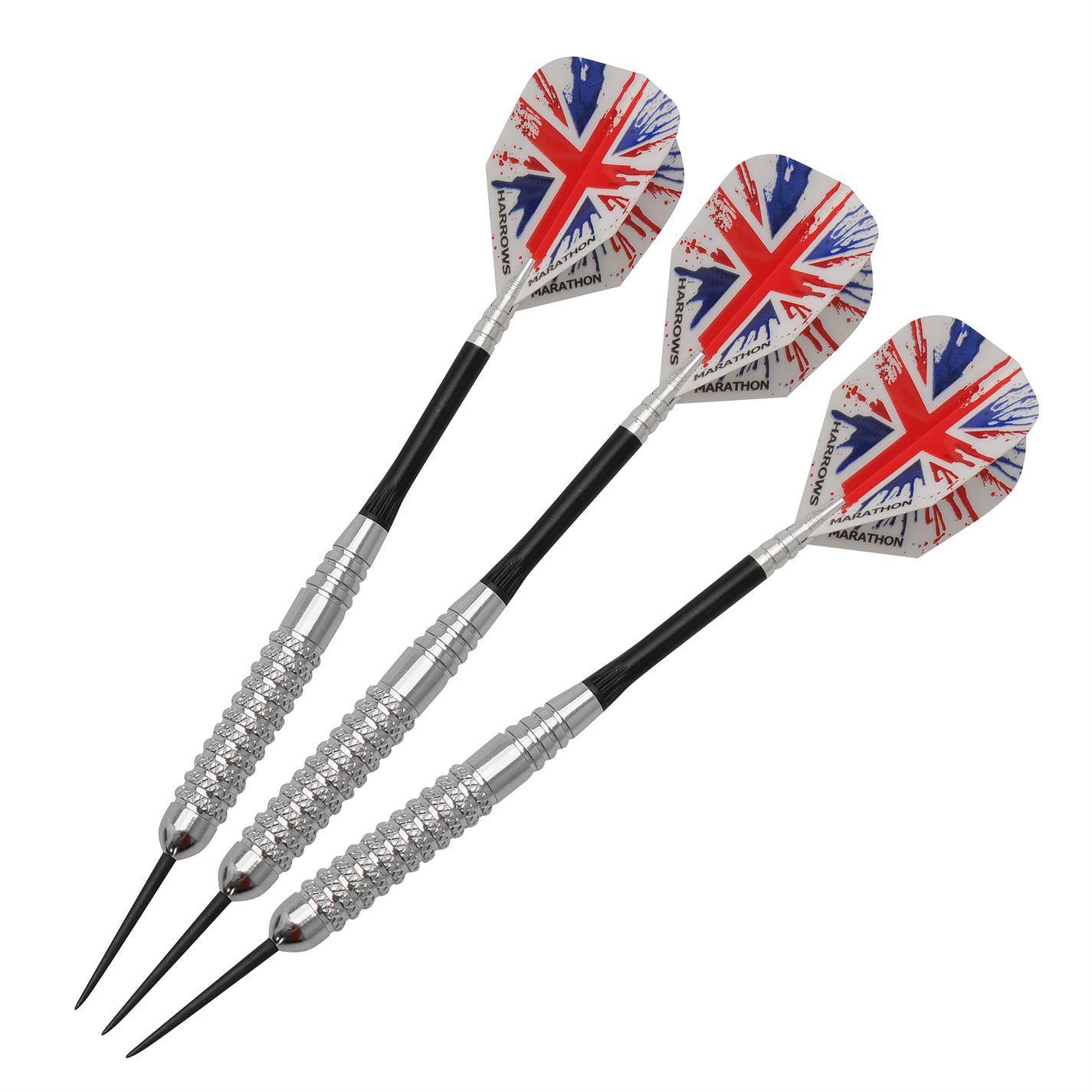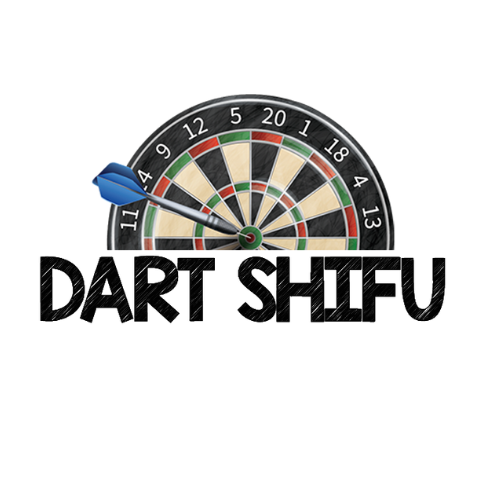To choose darts, consider weight, grip, and barrel style. These factors affect your throwing technique and overall performance.
When selecting darts, ensure they are the right weight for your playing style, with heavier darts providing more stability and accuracy. Additionally, choose darts with a grip that suits your preferences, such as knurled or smooth, to ensure a comfortable hold.
Lastly, the barrel style of the dart can affect the flight path, so choose a shape that complements your throwing style. By considering weight, grip, and barrel style, you can select the perfect darts for your game.
Factors To Consider When Choosing Darts
Choosing the right darts can greatly impact your accuracy and overall playing experience. While many factors can influence your decision, three key considerations are weight, material, and grip. These aspects can affect how the dart feels in your hand, how it flies through the air, and how it sticks to the dartboard. By understanding these factors and their significance, you can make an informed decision that suits your playing style and preferences. Let’s delve into each factor to help you choose the perfect darts.
Weight
The weight of the dart is a crucial factor to consider when choosing the right set. It is important to find the weight that feels comfortable in your hand and allows you to maintain control and accuracy during your throw. Darts typically range in weight from 16 to 30 grams, with the most common weights falling between 20 and 26 grams.
Below is a table that breaks down the different weight options and their implications:
| Weight (grams) | Characteristics |
|---|---|
| 16-18 | Lightweight; ideal for players with a fluid throwing motion |
| 19-22 | Midweight; offers a balance between control and power |
| 23-26 | Standard weight; versatile for various playing styles |
| 27-30 | Heavyweight; suitable for players who prefer a more forceful throw |
Material
The material of the dart barrel can impact its durability, grip, and overall performance. Dart barrels are commonly made of brass, nickel-silver, tungsten, or a combination of these materials. Each material has its own unique properties that influence the dart’s flight and how it feels in your hand.
Here’s a breakdown of the different dart barrel materials:
- Brass: Affordable and widely available; provides a good grip but may wear down over time.
- Nickel-Silver: Offers a sleek and stylish look; provides good balance and durability.
- Tungsten: Highly dense and durable; provides excellent balance, grip, and control.
Grip
The grip of the dart refers to the texture or pattern on the barrel that allows you to have a firm hold while throwing. The grip is crucial as it can affect your release and the consistency of your shots. Different players have different preferences when it comes to grip, so it’s important to find a style that feels comfortable and provides the right amount of control.
There are various types of dart grips available, including:
- Smooth: Ideal for players who prefer a clean and uninterrupted release.
- Knurled: Offers a rugged and textured grip that enhances control.
- Ringed: Features rings or grooves for enhanced grip and control.
- Scalloped: Provides multiple deep grooves for increased grip stability.
When choosing a dart grip, it’s essential to consider your personal preference and the level of grip you desire for optimal performance.

Credit: darthelp.com
Types Of Darts
When it comes to the game of darts, choosing the right type of darts is crucial. There are several different types of darts available, each with its own unique features and advantages. In this section, we will explore the different types of darts that you can choose from: steel tip darts, soft tip darts, and magnetic darts.
Steel Tip Darts
Steel tip darts are the most common and traditional type of darts used in professional games and tournaments. As the name suggests, these darts have sharp steel tips that are designed to stick into a bristle or sisal dartboard. The weight of steel tip darts is typically heavier, ranging from 20 to 30 grams, making them suitable for players who prefer a more substantial dart to throw.
One of the main advantages of steel tip darts is their durability. The metal tip helps the darts maintain their shape and integrity over time, ensuring consistent performance. Additionally, the sharp tip allows for better penetration into the dartboard, reducing bounce-outs and increasing scoring opportunities.
When choosing steel tip darts, it’s important to consider the weight, barrel shape, and grip style. The weight of the dart should match your throwing style and preferences, while the barrel shape and grip style should provide you with a comfortable and secure grip.
Soft Tip Darts
Soft tip darts are commonly used in electronic or plastic dartboards, which have smaller holes and do not support steel tips. These darts have plastic or nylon tips, which are safer and less likely to cause damage to the surrounding area. They are a popular choice for home use, casual play, and electronic dartboards found in arcades or bars.
Soft tip darts come in a lighter weight range, typically between 14 to 18 grams, making them easier to throw for beginners or players with a lighter touch. The lighter weight also reduces the chance of bounce-outs, as the softer tip tends to stay in the board more easily.
When selecting soft tip darts, consider the barrel material, length, and grip style. The barrel material can vary from plastic to brass or tungsten, each offering its own advantages in terms of durability and performance. The length and grip style should be chosen based on your personal preferences to ensure a comfortable and consistent grip.
Magnetic Darts
Magnetic darts are an excellent choice for children or those who are concerned about safety. These darts feature a magnet instead of a sharp tip, allowing them to safely adhere to magnetic dartboards. Magnetic dartboards are often double-sided, with one side having a standard dartboard design, and the other displaying a target game.
Magnetic darts are typically lightweight and come in sets that include both a single-color set and a dual-color set for team play. While they are not suitable for professional use or tournaments, magnetic darts are a great option for family fun or casual play.
Tips For Choosing The Right Darts
Looking for the perfect darts? Follow these tips to choose the right one for you!
Choosing the right darts can greatly impact your performance in the game. Whether you’re a beginner or an experienced player, finding the perfect set of darts is essential. In this section, we’ll provide you with valuable tips to help you choose the right darts that suit your playing style, skill level, and playing environment.
Try Different Weights
One important factor to consider when selecting darts is their weight. Darts come in a variety of weights, typically ranging from 16 to 30 grams. It’s crucial to find a weight that feels comfortable and balanced in your hand, as this can greatly influence your throwing accuracy and consistency.
Beginners often find it helpful to start with lighter darts, around 16 to 18 grams. This allows for easier control and helps develop a consistent throwing motion. Intermediate and advanced players, on the other hand, may prefer heavier darts, such as those weighing 22 grams or more, to achieve greater stability and power.
It’s a good practice to try out darts of different weights before making a purchase. Many local dart shops or sports stores offer a dartboard area where you can test different sets. Take advantage of this opportunity to find the weight that best suits your throwing style and comfort.
Consider Your Skill Level
When choosing darts, it’s important to consider your skill level in the game. Different skill levels require different darts, as they can affect your accuracy, control, and overall game experience.
If you’re a beginner, it’s generally recommended to opt for darts with a larger barrel. The larger barrel provides a larger target for your grip, making it easier to hold and control the darts. These darts are often designed with a front-loaded weight distribution, which helps improve stability and assists in learning a proper throwing technique.
For intermediate and advanced players, darts with a slimmer barrel are typically preferred. The slimmer barrel allows for tighter grouping and more accurate throws. Additionally, more experienced players may have developed a specific throwing technique or grip style, and selecting darts that accommodate these preferences can greatly enhance their overall performance.
Consider Your Playing Environment
Another crucial factor to consider is your playing environment. The dartboard setup and playing conditions can vary from location to location, and this can affect the type of darts that will work best for you.
If you primarily play at home, you can choose darts with soft tips, which are designed for use with electronic dartboards. These soft-tip darts are typically lighter, ranging from 16 to 20 grams, and their tips are made from plastic or nylon. On the other hand, steel-tip darts are used for traditional dartboards made of sisal or bristle. These darts are generally heavier, ranging from 22 to 30 grams, and they feature a sharp steel point.
Consider the distance between the throwing line and the dartboard as well. If you’re playing in a larger space with a longer throwing distance, heavier darts may be more suitable as they can retain more momentum during flight. However, if the throwing distance is shorter, lighter darts may be easier to control and generate sufficient force upon impact.
By considering your playing environment, you can select darts that are perfectly suited for the conditions you regularly encounter, enhancing your overall playing experience and performance.

Credit: www.dartscorner.co.uk

Credit: 3dartstoplay.com
Frequently Asked Questions For How To Choose Darts
How Do I Know What Darts Are Best For Me?
To find the best darts for you, consider your playing style and preferences. Try different weights, grips, and barrel materials to see what feels comfortable. Experimentation and practice will help you determine the darts that suit you best.
How Do I Choose A Darts Throw?
To choose a darts throw, consider the weight and grip of the dart, your throwing style, and your level of experience. Experiment with different darts to find one that feels comfortable and suits your technique. Practice regularly and seek advice from experienced players to improve your throwing accuracy.
How Do I Choose A Dart For Beginners?
To choose a dart for beginners, consider the weight, grip, and type. Start with a 20-gram dart for better control. Choose a dart with a comfortable grip, like knurled or ringed. For beginners, steel tip darts are recommended as they are more common and suitable for most dartboards.
Do I Need Light Or Heavy Darts?
You’ll need to consider your playing style and personal preference. Light darts are best for those who prefer speed and accuracy, while heavy darts provide more stability and control. Choose the weight that feels comfortable and suits your throwing technique.
Conclusion
Choosing the right darts is crucial for enhancing your performance in the game. By considering factors such as weight, grip, and balance, you can find the perfect set that suits your throwing style and skill level. Don’t forget to test out different darts before making a final decision.
Remember, the right darts can make a significant difference in your gameplay. So, take your time, do your research, and enjoy the game with the perfect set of darts!



